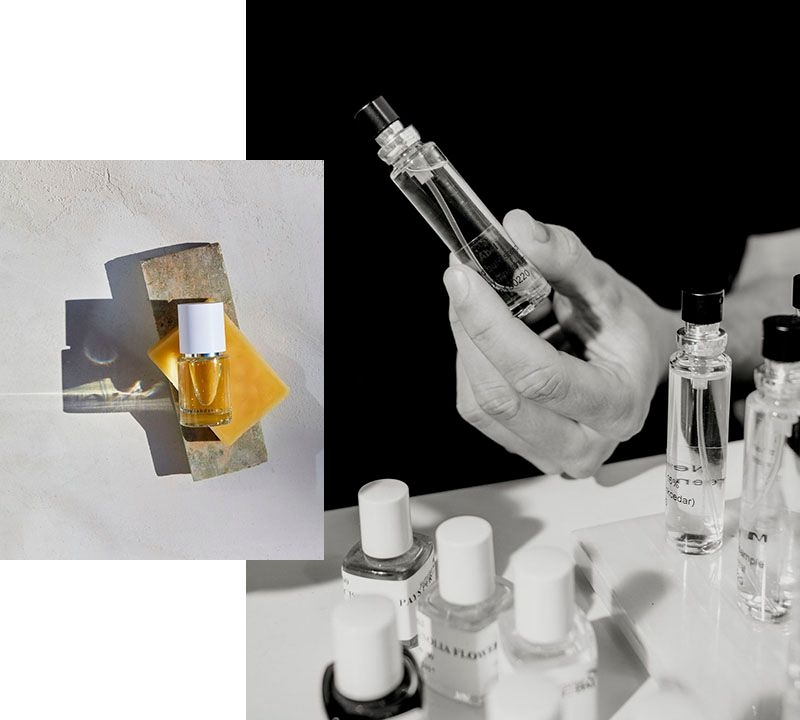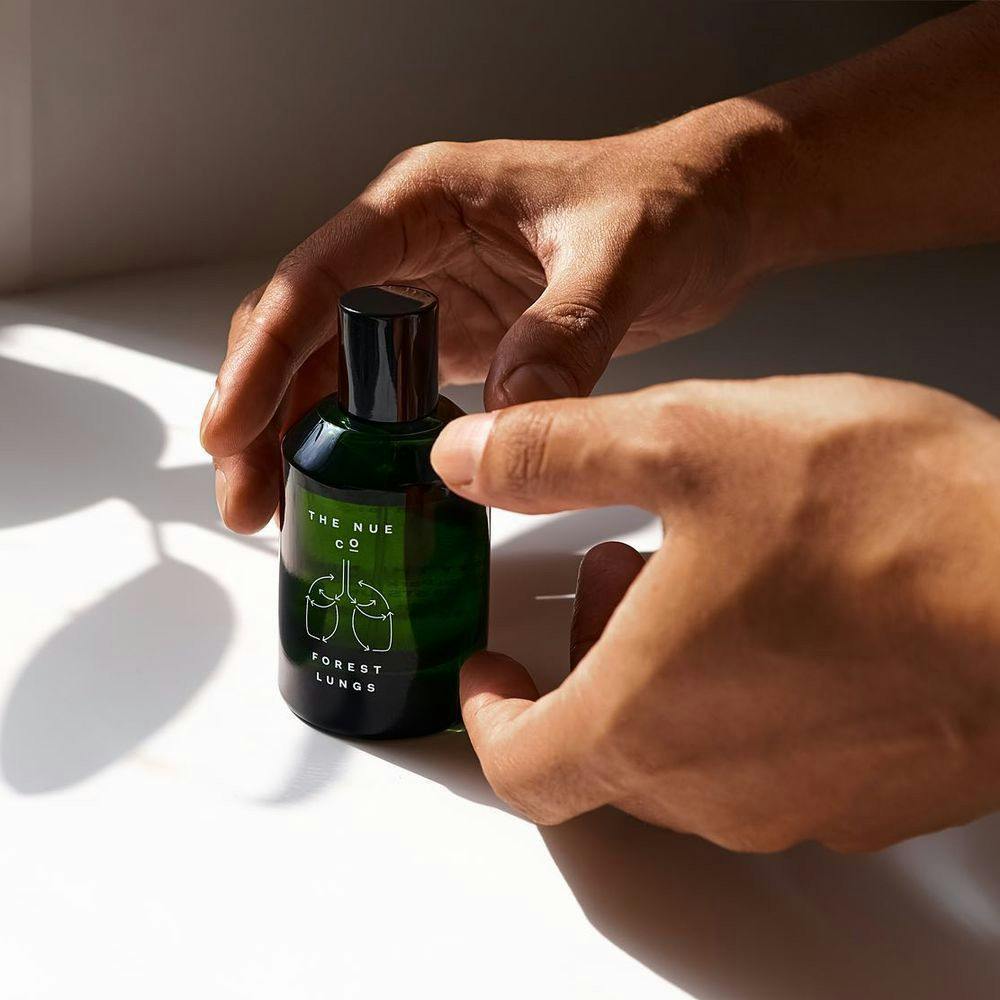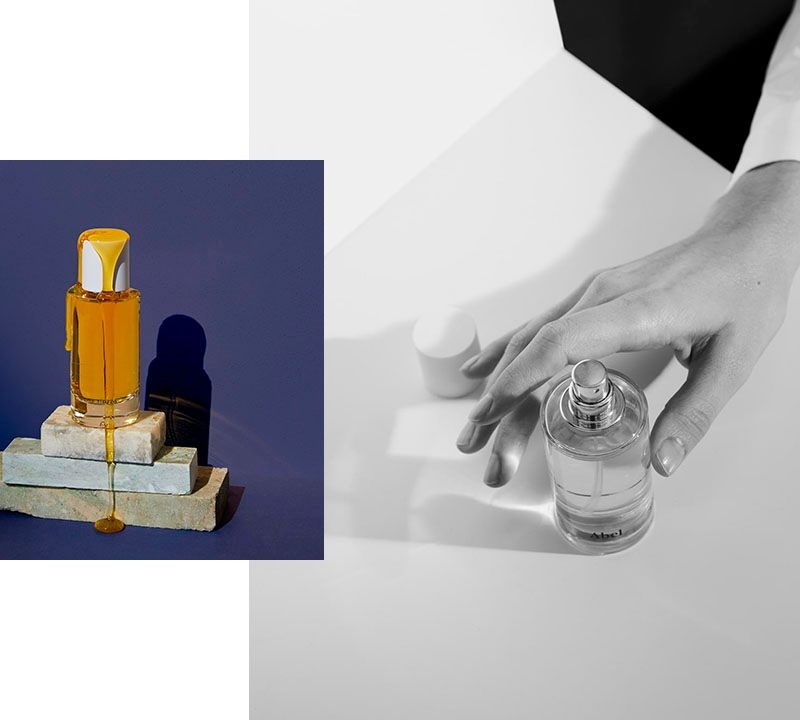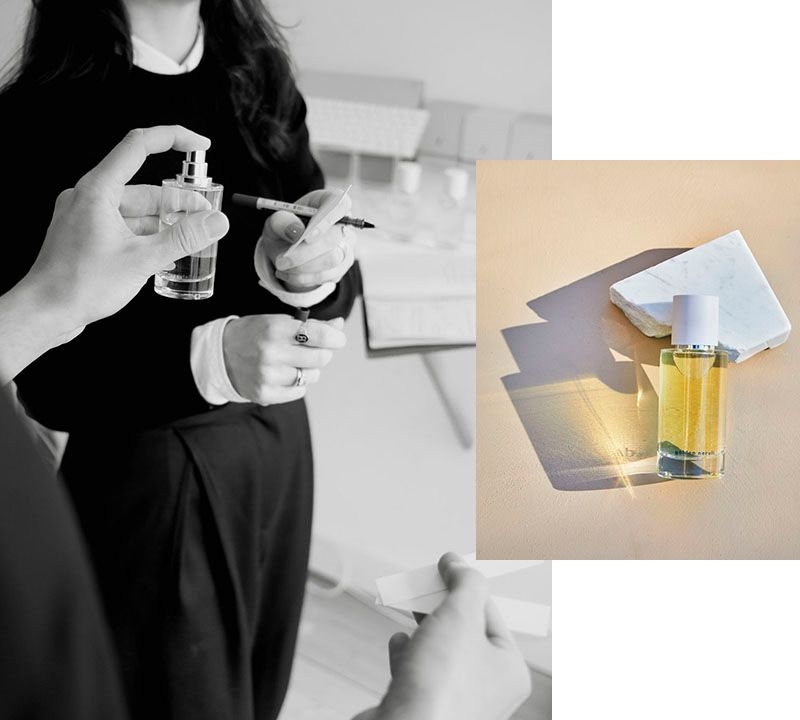
“Then, were not summer's distillation left,
A liquid prisoner pent in walls of glass,
Beauty's effect with beauty were bereft,
Nor it nor no remembrance what it was:
But flowers distill'd though they with winter meet,
Leese but their show; their substance still lives sweet.”
These words, taken from one of Shakespeare’s many sonnets, could not be more true. Scents are like time machines that transport us to our distant memories. Smells easily reach the very depths of our subconscious, influencing our feelings and mood.
Scientists associate this inter-relationship of olfactory perception and emotions with the name of another genius scribbler, Marcel Proust. In his masterpiece In Search of Lost Time, the French writer vividly captures this process. The plot sees the main protagonist dip a madeleine cookie in a tea as it begins to exude its characteristic smell of fleur d'oranger and lemon zest and takes him back to the most intricate memories of his childhood. Modern science is convinced that the so-called Proust Effect can and should be used to our advantage. This is where nootropic fragrances come in.
What are nootropics?
Nootropics (from the Greek noos for “mind” and tropos meaning “to bend/to turn”) are substances designed to stimulate the metabolism of our central nervous system, and the brain in particular. They improve memory and concentration, increasing productivity and enabling the brain to sustain workload pressures.
Nootropics also stabilise emotions, reduce the impact of stress and curb anxiety. The first nootropic substances were synthesised in the 1960s, with the term itself coined a whole decade later. Over-the-counter medicines typically contain nootropics in the form of peptides, amino acids, ginkgo biloba derivatives and certain antioxidants.
Can smells be nootropic?
Scents can also act as nootropics by improving our mood and calming our nerves, making us more focused and capable of overcoming stress. While these claims started out as assumptions, researchers worked hard to prove them in practice, building on their existing knowledge of the human ability to distinguish and memorise nothing short of 10,000 smells. American scientists Richard Axel and Linda Buck won a Nobel Prize for this very discovery in 2004. The rest is down to our olfactory memory: when perceiving smells which we associate with pleasant memories, we feel better.
According to The Sens of Smell Institute’s research, half of our visual memories are lost in just three months’ time, while 65% of smells are retained in our memory for an entire year. Studies at The Rockefeller University have shown that short-term memory retains only 1% of tactile perceptions, 2% of auditory, 5% of visual, 15% of taste and 35% of olfactory ones. Fragrances are also known to evoke emotions. Data obtained from Mood Media’s monitoring has shown that 75% of daily emotions is linked to scents.
Having pleasant sounds, landscapes, embraces, a range of movements and a diversity of fragrances does wonders for the brain.
Fragrance has an impact on the following eight key mood factors: irritability, stress, depression, apathy, euphoria, sensuality, relaxation and excitability. This was established by the American researchers Craig Warren and Stephen Warrenburg. To examine how odours can transform our mood they measured their participants’ heart rate, blood pressure, skin contact resistance and muscle tension. The findings were remarkably nuanced. In one of his articles Warrenburg compares the smell of vanilla with that of a clementine. While both are pleasant and lead to a feeling of happiness, vanilla relaxes and clementine stimulates.
Some argue that the smell of rosemary can help improve memory recall. Generally, having a rich palette of fragrances in your life is a great idea. Our brain needs to receive high quality stimulations to work effectively. Having pleasant sounds, landscapes, embraces, a range of movements and a diversity of fragrances does wonders for the brain. Next time you are going for a stroll, try picking a leaf off a plant, rub it in between your fingers and inhale its scent. This will add the bonus of an olfactory exercise to a mundane walk.
Functional perfume
The discovery of the ability of smells to influence our cognitive function led to the development of a new functional fragrance trend in the perfume industry. The novel post-Covid reality we are in, with its increased focus on our mental and physical self-care, has no doubt been a catalyst, as we began to be more conscious of our life/work balance and digital communication and took up regular mindfulness practices. Few people buy perfume today with just its fashion status in mind. The main thought that usually runs through the mind of a buyer today goes something like this: “What can this fragrance do for me?”
The perfume industry itself seems to have gone back to its roots. Many centuries ago, perfumes were not a means of expressing your personality, which certainly seems to be the role they play today. In the past the perfume industry adhered to much more practical goals, be it physically or spiritually. In some cases, it was even designed to facilitate communication with otherworldly forces through incense burning and was used to protect against bacteria and diseases.
In recent years, some clinics around the US started using the scent of vanilla in MRI units to ease claustrophobia. Vanilla scents are also sometimes offered to anxious dental patients. Vanilla’s calming properties were first observed by the staff of the Memorial Sloan-Kettering oncological centre in the US. Here 57% of patients were given a scent of heliotropin (similar to vanilla used for baking) prior to magnetic resonance therapy, reducing anxiety by 63%.
Types of functional fragrances
Functional perfume is not the same thing as aromatherapy, which uses pure essential oils. Functional scents can use any naturally fragrant ingredients such as absolutes, tinctures, concretes and CO2 extracts. As a result, the concept of functional perfume is much wider.
These therapeutic scents can also be found in many different forms. Typically they come as the all-familiar perfume in a spray bottle, roll-on oil-based perfume, fragranced candles and such interior specific aroma accessories as diffusers, room sprays and incenses.
Pillow mists or sleeping sprays are perhaps the most fascinating. Designed to help you fall asleep, they contain essential oils and hydrolates with calming properties. Unlike room sprays, the pillow kind is more suitable for the skin, given the inevitable likelihood of your face coming into contact with your pillow. Manufacturers have to be careful that their products do not cause irritation. Otherwise, they are simple to use: just a few spritzes 20 cm away from your pillowcase and restful sleep is guaranteed.
Fragrances and what they can do
As Stephen Warrenburg discovered, some scents are relaxing, while others are invigorating. If it is the former you are after, go for lavender, chamomile, geranium, verbena, neroli, jasmine or ylang ylang. For something more stimulating try grapefruit, lemon, sweet and bitter orange, mandarin and bergamot. A study carried out by scents producer Takasago noted the ability of lemon fragrance to help reduce the number of mistakes their employees make while typing by 54%. For comparison, the smell of lavender was 2,5 times less effective for these purposes.
The scents of peppermint, eucalyptus, pine, moss, wood resin and rosemary are capable of improving concentration and productivity. Craig Warren discovered that the smell of spearmint can reduce the number of mistakes made while completing a boring task. Mint in general, like lavender, can work in polar opposite ways: relaxing in some circumstances and stimulating in others.
Dr Andrei Beloveshkin writes that when it comes to rosemary, evidence suggests that the inhalation of its extract leads to an increase of 1,8-cineole contents in the blood. Higher contents of this substance made the participants of one study calmer and more focused, increasing their productivity without overstimulating them. Further research has shown rosemary’s ability to improve memory related test results in a classroom setting by 5-7%.
Where to find them?
One of the functional perfume industry’s most distinguished brands is London-based NEOM Organics. Its founder Nicola Elliott is a former journalist who retrained as an aromatherapist and built her brand with the smells’ therapeutic qualities in mind. Today, the company sells dozens of diffusers, candles and scented sprays designed to make you relaxed, motivated, energised and happy.
The Nue Co, known for its supplements, released its first de-stress aroma in 2018. Their spicy woody Functional Fragrance with a hint of green cardamon, palo santo, iris and cilantro was followed by the release of the smoky and coniferous Forest Lungs fragrance with chords of cedar, vetiver and patchouli, made by perfumers using the methodology of the University of Geneva’s Brain & Behaviour laboratory. People’s individual neurological reactions to specific groups of smells were studied in the process of their making. It was concluded that 96% of people felt calmer immediately after applying their Functional fragrance, while 89% noted that the effect continued to last half an hour later. The Forest Lungs perfume was also effective, with 91% of users reporting a reduction in anxiety as a result of regular use over the course of 30 days.
Given the risks involved if the idea does not catch on, the biggest players tend to jump on board of such new trends last. However, when it comes to functional fragrances big names are keen to not be left behind. Out of the six largest perfume companies at least half are now focusing their efforts on this new direction, gathering customer data and collaborating with neurobiological laboratories.
The leadership of the Japanese company Takasago admit that they have started including a section dedicated to emotions in their perfumers’ briefs. This has a lot to do with the fact that fragrances are increasingly sold online, without the possibility of testing it first. In 2020, the Swiss Givaudan Group introduced VivaScentz technology to help customers achieve maximum wellbeing through scents. In other words, the formulas used for perfume, make-up, interior scents and self-care products are due to take on serious therapeutic properties in the near future.
Meanwhile, American corporation IFF is carrying out their Science of Wellness programme, which combines neurobiological data with the use of AI. The algorithm calculates what ingredients and their combinations would provide a particular emotional impact on consumers. Paco Rabanne Phantom is a result of using this particular technology by a mainstream perfume brand for men. In this case artificial intelligence’s recommendation was to increase the concentration of stearalyl acetate molecules associated with the smell of geranium ten times, which added a more vintage tone and warmth to this fragrance, already containing hints of lemon, lavender and vetiver. The men using this perfume report skyrocketing self-confidence and irresistibility. What’s not to like?
Editors’ Picks
The Nue Co
Functional Fragrance
This Functional Fragrance is a true anti-stress supplement which was developed using data insight and research into the connection between cognitive function and the olfactory system. Has a clean, woody, spicy and smoky scent formulated with green cardamom, iris, palo santo, violet, and cedarwood.
De Mamiel
Altitude Oil
De Mamiel’s functional essence was developed to activate neural pathways linked to the state of calm and reduce the levels of the stress hormone cortisol. The aroma features mint, lavender, pine, eucalyptus, lemon myrtle, patchouli and fragonia. Inhale to help you navigate any tricky situations, including to relieve anxiety associated with flying.
Lina Hanson
Vibe Perfume Oil
The sweetness of agarwood oil (oud) is here intertwined with warming black pepper and spicy cardamon. Use this sensuous and tart aroma to meditate and melt away a difficult day.
de Mamiel
Shine Oil
A formula consisting of milk thistle, citruses and stress-relieving ashwagandha is a great way to get energised on a Monday morning and channel your best self for a fruitful and productive week.
H Gillerman
Jaw Clenching Remedy
Functional fragrances can do just about anything. They can also help unclench tight jaws for those experiencing headaches and toothaches and any other pain around your ears or face. This particular concoction is especially developed for spasms in the temples and lower jaw joint areas to provide a relaxing and calming effect. Lavender, vetiver, patchouli, German chamomile and palmarosa come to the rescue. Its mildly sweet aroma is grounding and calming.
Therapie
Energy Drops
These therapeutic drops are great for when you need a boost. Therapie’s energising elixir is the best remedy for fatigue, brain fog, low mood and sinking energy levels. Bursts of citrus peel oils, holy basil, silver fir needle oil, ylang ylang and geranium create a scented cocktail, which can immediately shift your mood and help with focus. Rub it in between your palms and inhale. Can also be applied to your pulse points.
The Nue Co
Forest Lungs
Miss being in nature or haven’t had your dose of forest bathing for a while? Have your very own mini shinrin-yoku session at home with this aromatic bio supplement, which sets out to imitate forest air on a molecular level.



